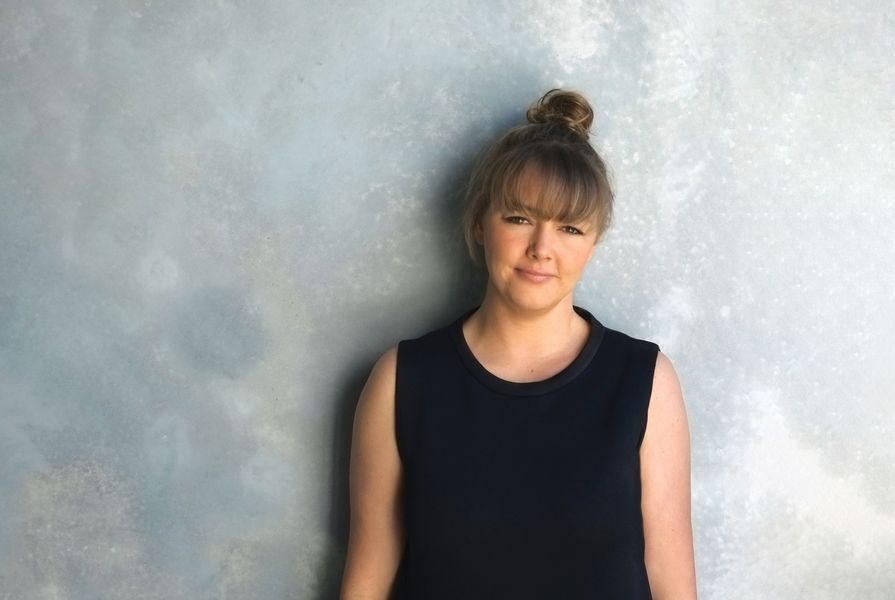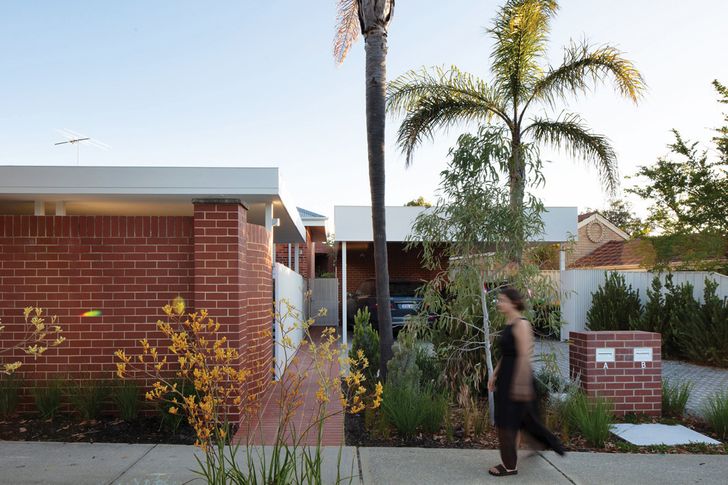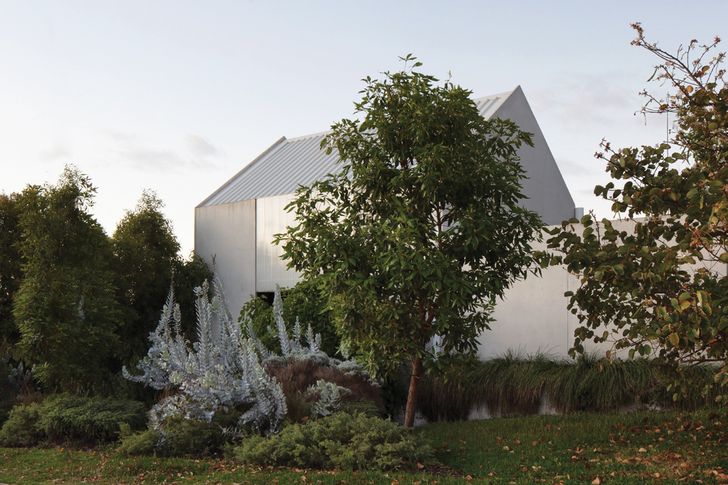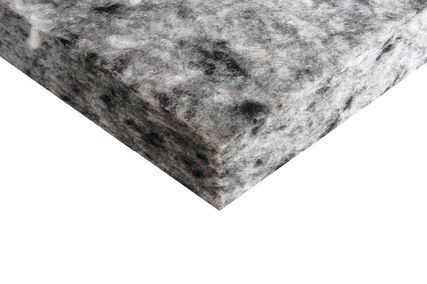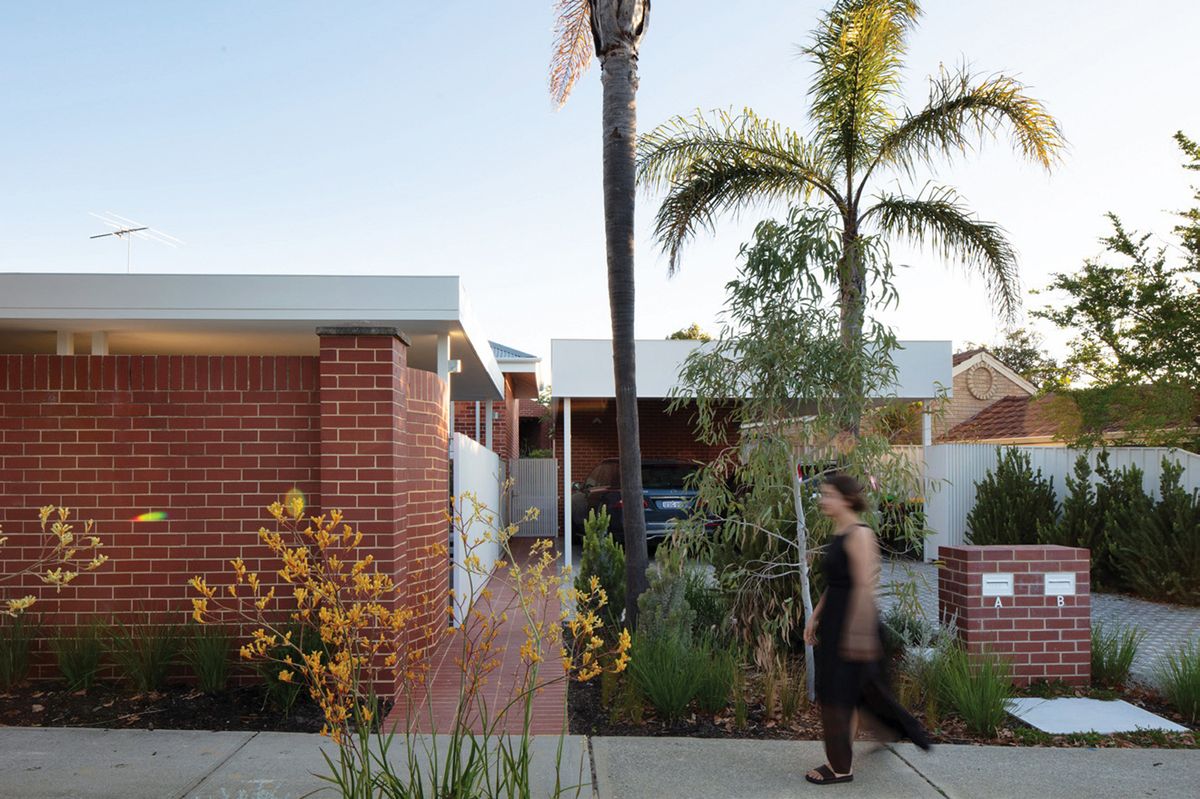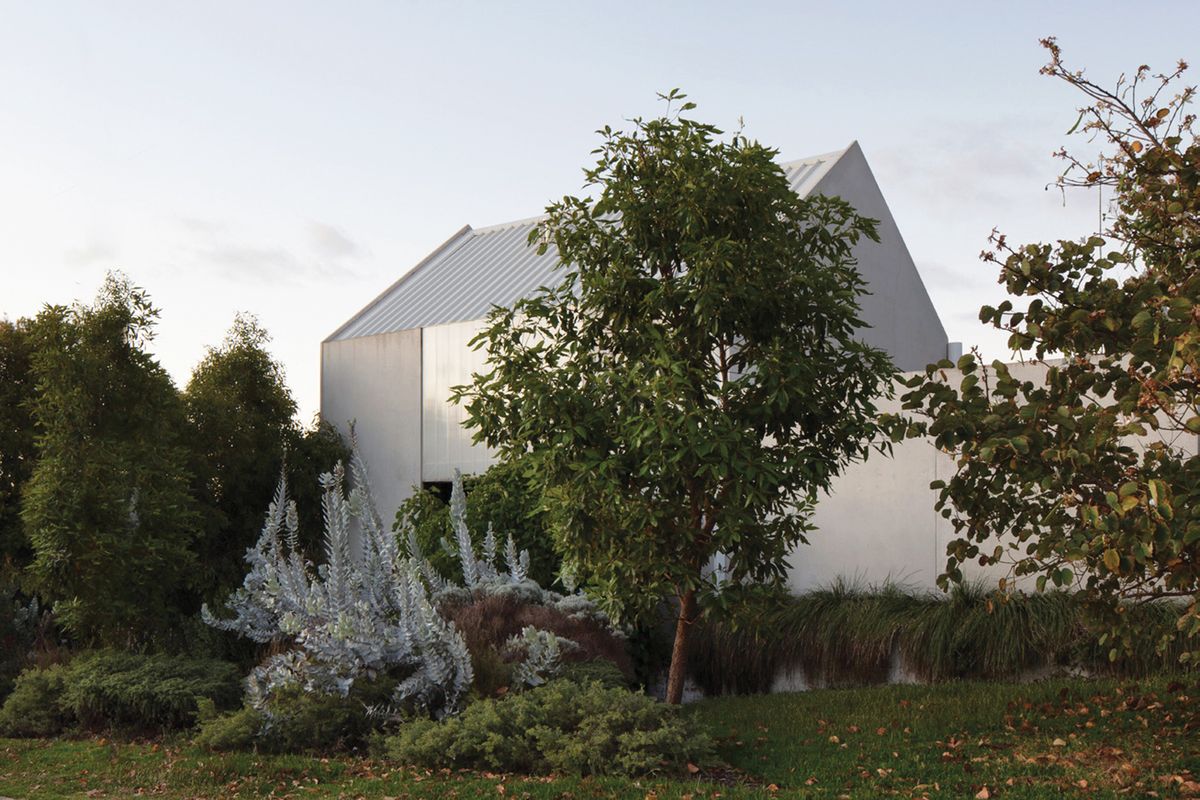Under the banner “Ready-made architecture,” the Perth-based enterprise New Resident is challenging the way architecture is procured and projected. The antithesis of a current generation of Australian residential architecture – characterized by the bespoke, distinctive, awarded home – this banner is next gen.
It isn’t a new concept. The Australian architect’s role in mass housing today is a shadow of what it was in the postwar decades. From Robin Boyd’s well-known Small Homes Service to the Perth-based Homes Plan Bureau run from the Boans department store, architects were once selling plans to a public looking for northern- lit and efficiently planned spaces connected to generous yards.1 Plan upon plan, this system could reproduce responsive typologies in large numbers across new suburbs.
On suburban blocks, the New Resident model retains existing character houses while adding new homes based on adaptable prototypes to the front and rear.
Image: John Madden
It was the semblance of architecture as system that marked this heyday in housing. In systems terms, there was an “emergence” of a collective culture and paradigm. The whole was greater than the sum of its parts; if you looked at the parts – the architecture – in any detail, you might miss the flourishing system. However, Boyd’s and Boans’ schemes were carried along by a nascent sprawl crisis, as well as by expansionism at the edges of Australian cities. As bigger became better and (great Australian) dreams eroded, architects started to let go.
Rory Hyde recently surmised that if a new Small Homes Service were to emerge today, it wouldn’t have a sprawl engine, but a regenerative one. Perhaps the Small Homes Adaptability Service?2 New Resident has ambitions in this space. The Perth- based architect-developer practice led by Kate Fitzgerald is bringing adaptable prototypes to the existing suburbs. These are prototypes for development as well as design. In fact, New Resident is experimenting less with design and more with business strategy. Fitzgerald explains that they are seeking sustainable and affordable intersec-tions. This, she says, requires a strong and interdisciplinary team, including co-investor and practice partner Nikita Filippou, and a group of dedicated investors and builders.
On suburban blocks, the New Resident model retains existing character houses while adding new homes based on adaptable prototypes to the front and rear.
Image: John Madden
The New Resident model begins with the twentieth-century detached house on its open lot. This remains the dominant condition throughout Perth’s inner suburbs, and it makes financial and ethical sense to retain these houses. As an architectural move, this isn’t radical. But the ambition to replicate this operation at scale and to widely promote it to the public is a radical idea.
Under this model, the existing character house is immediately rented, which covers the cost of holding and subdividing the land (adding two or three micro lots). From here, the prototypes are applied around mature trees, creating new residences to the front and rear of the existing house, with gardens and communal spaces in between. All the units and the existing house can then be sold, quadrupling the lot’s density.
New Resident serves as both a model for development and an ambition for practice. Fitzgerald has been a strong advocate for the business of small practice, attracting a cohort of young architect-developers with an eye on new markets and housing patterns. New Resident’s trail of good projects encourages other next-gen practitioners to contemplate mass housing. But better outcomes en masse will require more than lot-by-lot projects; design policy reforms are imperative.
On suburban blocks, the New Resident model retains existing character houses while adding new homes based on adaptable prototypes to the front and rear.
Image: Benjamin Hosking
In August 2023, the Design WA medium-density code was finalized and only weeks away from gazettal. After years of sound public policy drafting and consultation, it was set to introduce unprecedented improvements in quality, energy efficiency, amenity and tree canopy retention. But, with the developers in both ears, planning minister John Carey shelved the policy on the assumption – or threat – that volume builders can’t – or won’t – carry out good design without also raising costs. In an interview, Carey explained: “I understand that I’m being criticized by urban planners, by local government regulators, and by architects. And I respect the pro-fession of architects, but who am I going to listen to? It is the small and medium builders, construction industry and developers that are producing this affordable product … they’re the people building it.”3
The conflation of “architect” and “well-designed” with “unaffordability” is implicit in the minister’s words. Almost 80 years after the Boyd and Boans age of well-designed mass housing began, and in the light of a national housing crisis, is it time to get behind the ready-made once again? Ready-made is gaining ground in some states. In September 2023, Victoria announced the statewide expansion of the Future Homes scheme, a plan that will fast-track approvals for a range of off-the-shelf medium-density types. In November 2023, New South Wales announced a pattern book of high-quality compliant designs developed with the Government Architect NSW. Done well, these schemes will result in thick catalogues of diverse housing types designed by a range of architects. In Fitzgerald’s words: “Medium-density is not only the key design opportunity for a better city, but the key business opportunity for architects for decades.” She has a clear vision of that future: one where Design WA is the scaffold for a resurgence in architect-led mass housing, hundreds of thousands of trees are saved and existing homes are adapted – driven by a plurality of practitioners of ready-made architecture, waiting to emerge.
- Geoffrey London, “Architects and mass housing,” Architecture Australia , vol. 96, no. 3, May/June 2007, 48–50; architectureau.com/articles/government.
- Rory Hyde, “What would Boyd do? A Small Homes Service for today,” Architecture Australia , vol. 107, no. 3, May/June 2018, 71–3; architectureau.com/articles/what-would-boyd-do.
- John Carey on ABC Radio, WA Mornings with Nadia Mitsopoulos , 10 August 2023; mediacore-live-production.akamaized.net/audio/ 01/l4/Z/4t.aac?source=web&content_id=102692892#t=5728.

